Literally anyone who hears the name of the country, will automatically wonder, “Is D.R. Congo safe?” I certainly did, especially since I planned on going there solo!
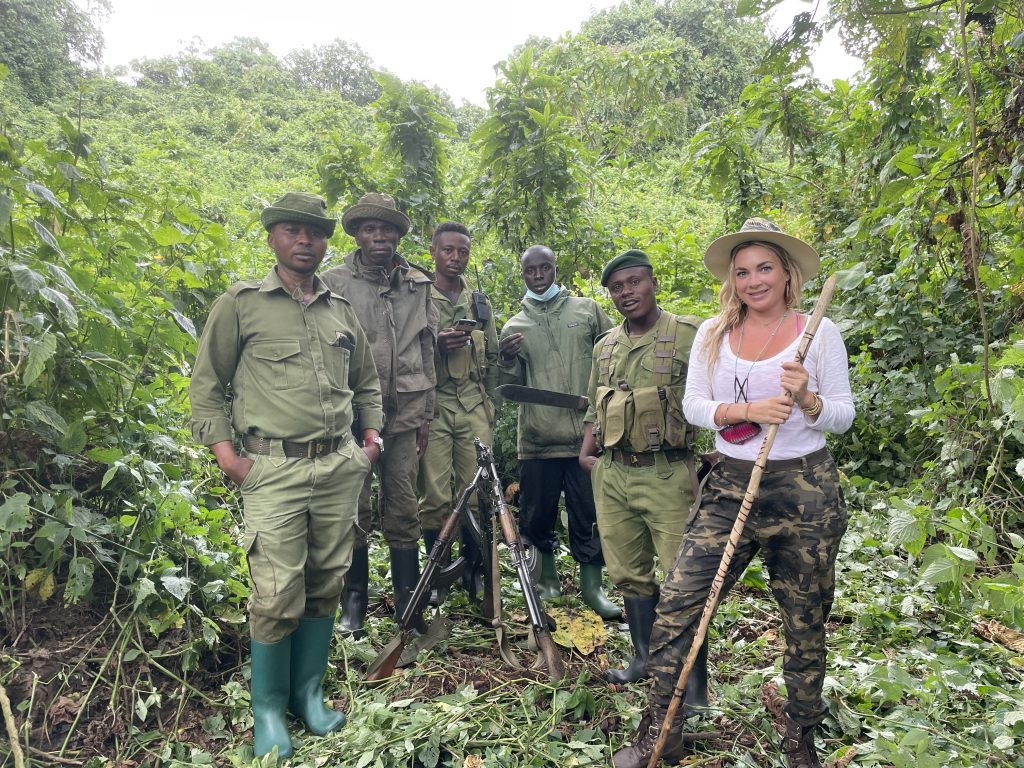
With nothing but negative stereotypes, warnings, and terrifying news reports, it’s no wonder at all why there is virutally no tourism in Congo. But that’s just a loss for the people afraid to go, because D.R. Congo is one of the most beautiful countries I have seen, and I was extremely surprised by it!
BUT! I’m not here to say that ALL of D.R. Congo is safe! Like most countries, there are definitely parts of it that are more dangerous than others! While I felt safe the entire time I was there solo, I knew to make sure to avoid dangerous areas, and followed the advice of my guide!
So in this post, I will explain to you a little about D.R. Congo’s violent past, current dangers, and some safety tips, to answer the question, “is D.R. Congo safe?”
Jump To:
First Things First: A History Lesson of Zaire-Congo
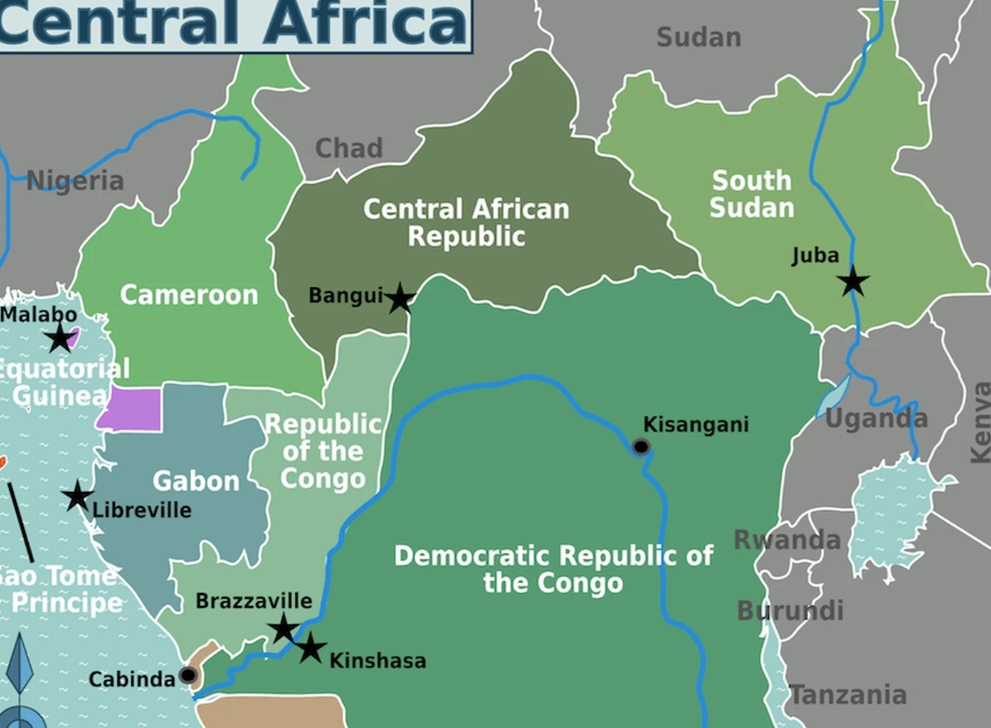
Before it was the Democratic Republic of Congo, it was the dictatorship country of Zaire. To fully understand where today’s safety issues come from in D.R. Congo, you need to understand the history, so please don’t skip this section!
It’s also important to realize that a lot of the violence today is not targeted at tourists. This is a huge misconception of many countries, but most of the time, the violence is carefully targeted, and does not include tourists.
It’s still always necessary to follow the advice of your guides, and to practice caution at all times!
Where the Violence Ultimately Stemmed From
As with most of the major violent events in African countries, they originally stem from colonialism. If you’re not familiar with that, I’m referring to when European countries decided to just claim parts of Africa to conquer. Conquering always involved dividing the people, and turning them against each other.
France is responsible for the colonization of Zaire (what D.R. Congo used to be called). And for the cause of dictatorship until 1996.
But we must also consider the Belgian colonization of Rwanda, which is ultimately blame for the reasoning behind the Genocide of the Tutsi.
The 1994 Genocide of the Tutsi in Rwanda & Creation of Rebels in Congo
Something interesting and surprising that I learned about the violence in Congo, is that it’s usually caused by Rwandan refugees. These refugees are the former-Hutu class group, who were responsible for the massacre of close to 1 million people (Tutsi) in 1994.
The reason why the Hutu-Rwandans fled Rwanda, was because the Tutsi refugees fought back and won control in Rwanda, threatening to imprison any Hutu involved.
Some of the refugees may have been innocent, and fled just to avoid accusations. However many really were the murderers, and maintained the evil desire to continue carrying out violence. They carried out attacks in Congo, and killed relentlessly.
The First Congo Civil War
In 1996, Rwanda and Uganda invaded eastern D.R. Congo to continue searching for the remaining perpetrators of the Genocide. At the same time, they also helped overthrow the current dictator, Mobutu Sese Seko, who was replaced by Laurent Kabila.
Kabila became the first non-dictator president, but then turned around and kicked the Rwandan and Ugandan forces out, due to fear of them taking the mineral-rich territory of eastern DRC. He also allowed the Hutu armies to regroup in eastern Congo, rather than turning them over to Rwanda for imprisonment.
The Second Congo Civil War
Multiple countries remained fighting in Congo for years, then finally in 1999, seven countries signed a peace accord. But then, in 2001, President Kabila gets assassinated by his bodyguard, leaving his son to take over the presidency.
In 2002 the new President Kabila successfully completed peace deals that finally got Rwanda and Uganda to leave Congo. Later in the year, he also negotiated a peace deal with the internal rebel groups, promising a power-sharing interim government.
During 1998 and 2004, the bulk of the fighting in these wars occurred, killing about 3.8 million people.
The Present Day Rebels and Where to Avoid Them
The rebels that live in the mountain jungles in the north of Congo, are the Hutus that fled Rwanda after the Genocide, that are still opting for violence over peace and unity. These rebels illegally make charcoal (by cutting and burning trees in National Parks), and poach animals for food and money.
It is very well known where these rebels are, and guides will absolutely not take you anywhere near them. So please don’t go exploring on your own in the jungles of Congo! Always go with a guide!
Most of the violence that still occurs due to these past issues is in the Northern Virunga mountains, and in an area called Kivu.
Is the City of Goma Safe?
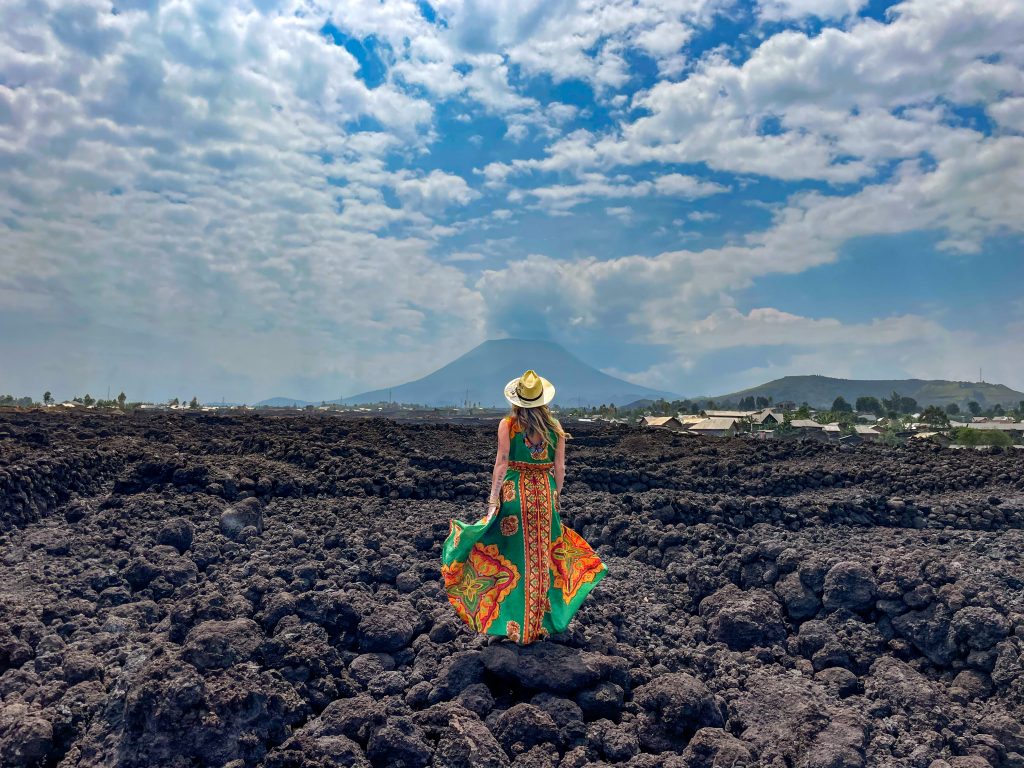
The main city you will likely be visiting in D.R. Congois Goma. I was in Goma solo, and even did things like go to the bank, ATM, shopping, and general walking around, and I didn’t feel and threats of danger. People were all polite and friendly, and there’s plenty of armed guards around anyway. Not to mention, hundreds of United Nations workers and peacekeepers.
Of course, as with any big city, always keep your belongings close to you, and don’t flash around expensive items or money. You can still dress up if you’d like though. You’ll see that everyone does in Goma!
Is D.R. Congo Safe for Gorilla Trekking?
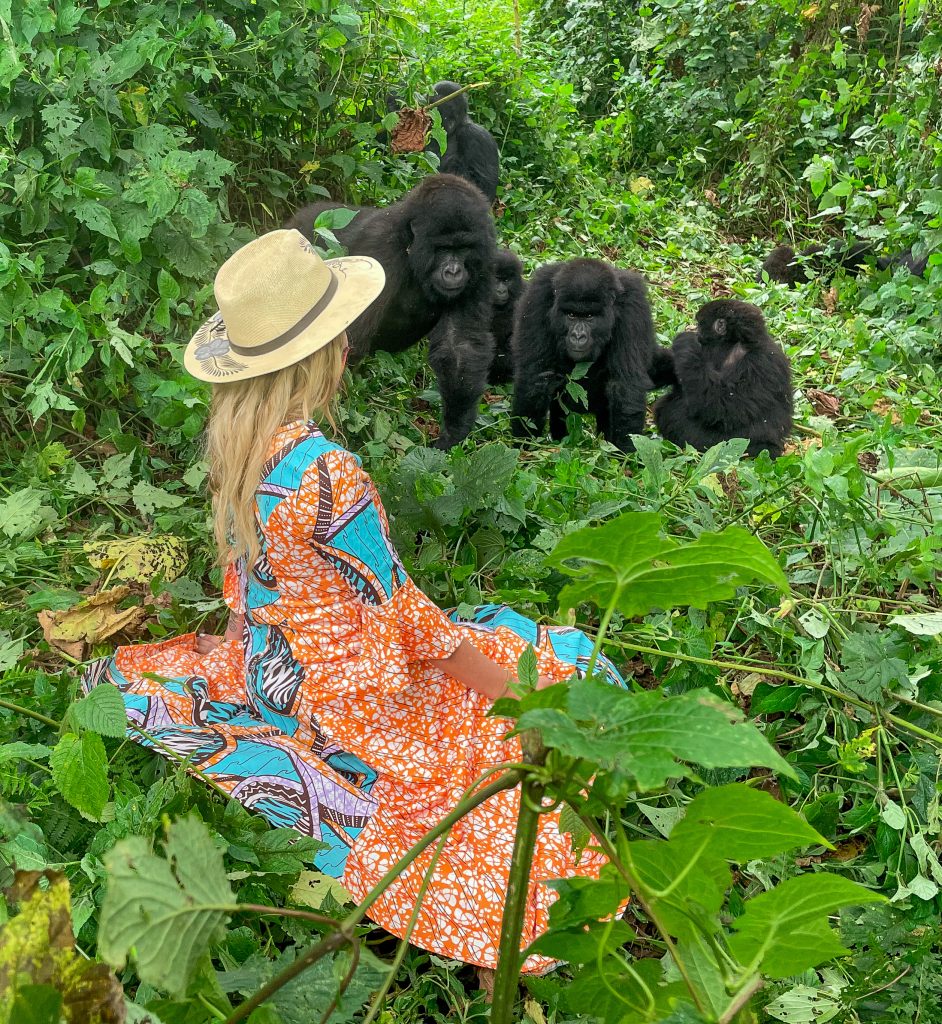
Several pepple also told me NOT to go gorilla trekking in D.R. Congo because “it’s not safe”. They were referring to the possibility of being attacked by the rebels who hide in the Virunga jungles, but as I mentioned above, there are different parts.
The part where they take tourists to do gorilla trekking is not where the rebels are. They also have trackers that go out to find the gorillas every single day, which means that if they saw any rebels or danger, they would notify the rangers ahead of time.
There is also always the potential threat of poachers, however again, Virunga National Park is very closely monitored. In fact, the rangers said the only poaching that happens these days is by the locals who set up snare traps to try and catch game like antelope and buffalo to eat. Sometimes the gorillas get caught in them, and then rangers and local veterinarians come to help them.
Are Mountain Gorillas Dangerous?
Obviously a wild animal that shares 90% the same genes of a human and weighs 260-300 pounds can be dangerous! Yes, a gorilla could easily kill a human! But it’s extremely rare, as they only attack when there’s a threat…like poachers.
You will be briefed for one hour, TWICE, to make sure you learn and understand everything about mountain gorillas, their biology, their habits, and safety protocols.
In general, here are the safety tips for gorilla trekking in D.R. Congo:
- ALWAYS follow your guide’s instructions
- Don’t make any sudden movements
- Be quiet!
- Try to stay still, either sitting or standing
- Avoid eye contact with the males
- Try to avoid showing your teeth (it’s a sign of aggression)
- If (and when) the male charges at something, DO NOT move and DEFINITELY DO NOT RUN! If you run, it will run after you, and it is faster than you! Instead, stay completely still, crouch onto the ground, and look down! The silverbacks charged past me three times but it was always at another gorilla or something past me.
Is D.R. Congo Safe for Volcanic Eruptions?
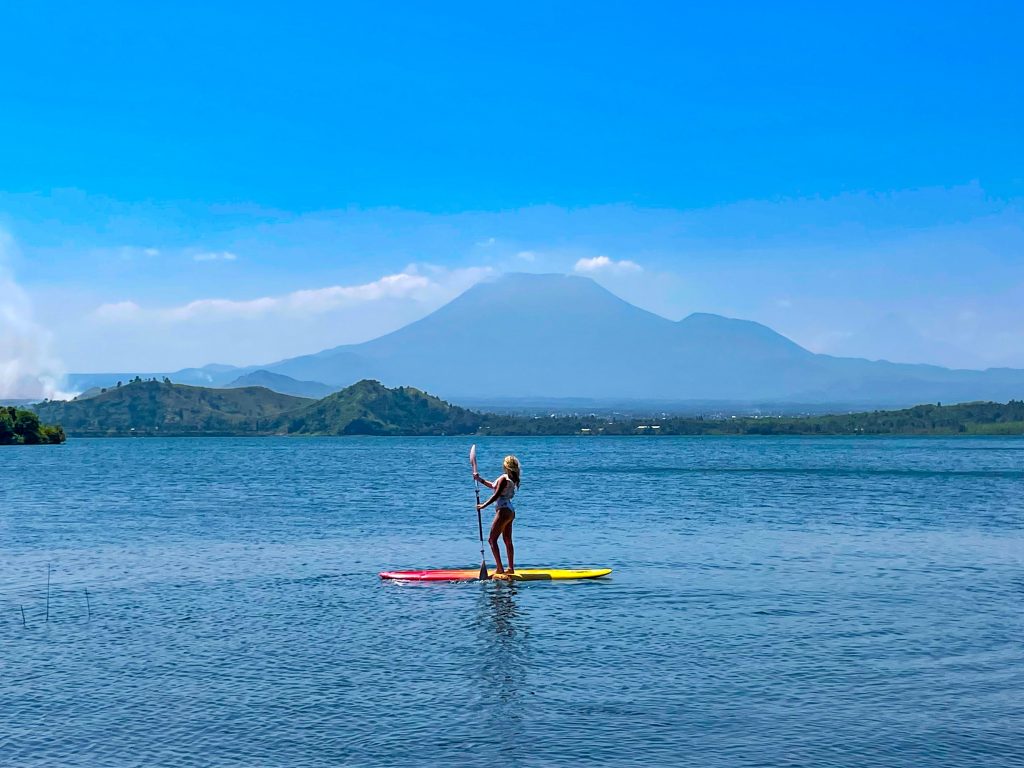
You may have heard about the recent eruption of D.R. Congo’s most famous volcano; Nyiragongo. It happened without warning (somehow), and my guide Obed was actually on it when it happened along with some guests!
Luckily, the lava that exploded out of it flowed very slowly, so while it did destroy thousands of homes, it did it so slowly that everyone was able to evacuate.
Considering that the last time Nyiragongo erupted was in 2002, there’s likely not going to be another one for twenty more years. However nature is unpredictible! That being said, always make sure you have ***travel insurance! It will cover natural disaster emergency evacuation!
Is Congo Safe for C0vid?
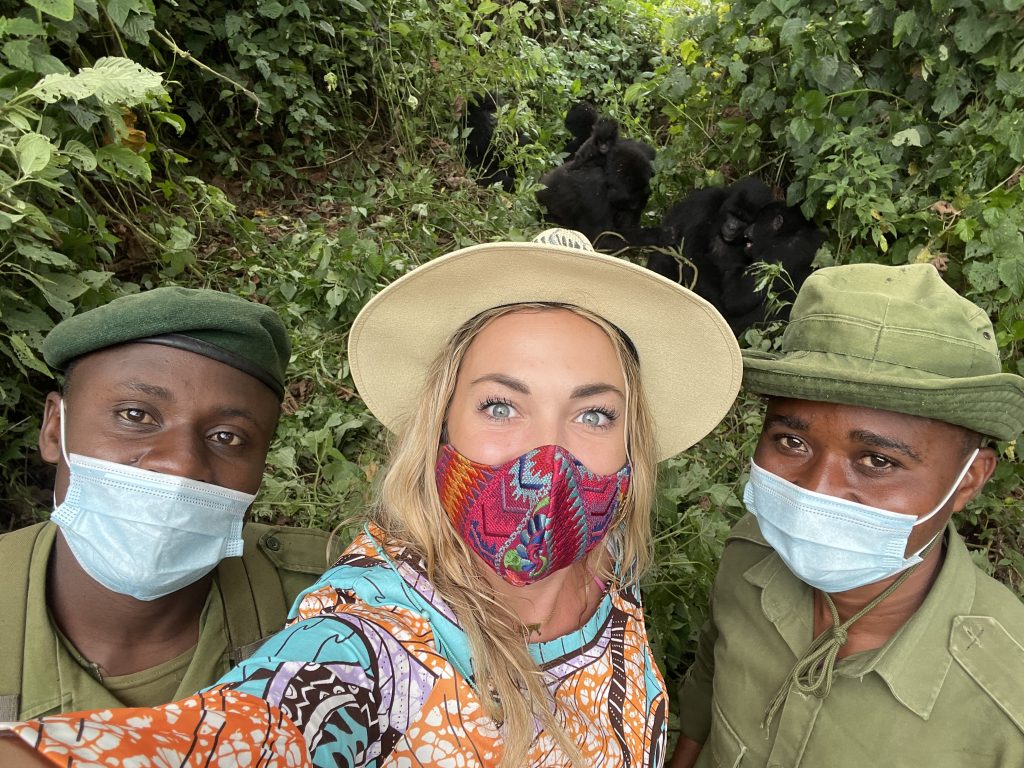
Let’s be serious, basically nowhere is safe from the virus. That’s why all I can really say is what their current numbers are, and that if you decide to travel to D.R. Congo soon, you better be safe about it — mostly for the local’s sake!
So for statistics: Congo has ‘only’ had a total of 51k recorded cases, and about 1,050 deaths according to the Worldometer. Vaccines are not widely available, so the number of vaccinated people there is very low.
Please DO NOT travel to D.R. Congo un-vaccinated. Again, this is mostly for the protection of the people here, and also the gorillas, who share 90% of our human genes, and can catch it too!
Are You Interested in Traveling to D.R. Congo?
After posting about my solo travel trip to D.R. Congo, I received an incredible response from adventurers who wanted to join me here next year! So I’ve turned it into a group trip!
Click here to view the itinerary and join my 2022 Group Trip to D.R. Congo! A portion of proceeds will go to purchasing new water pumps for the villages near Virunga!
Or if you’d like to go on your own, you can get 10% off your tour with Kumbukumbu Tours using the code “AfricAlyssa”
If you found this post informative or useful, please help me continue to provide free information by sharing it on social! I’d also love to hear your feedback in the comments below!


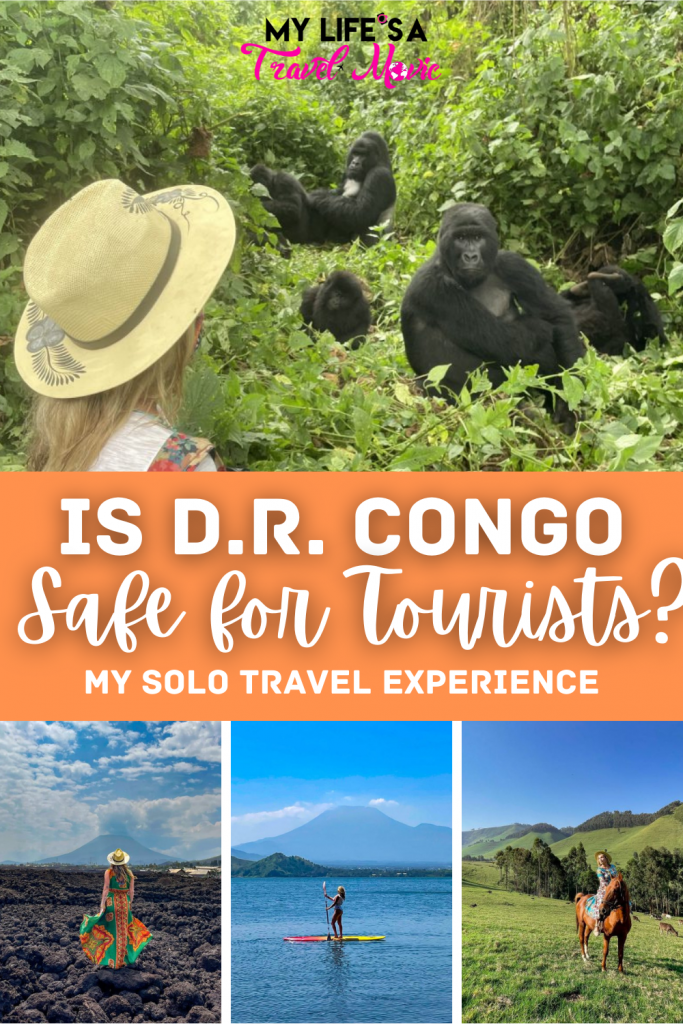
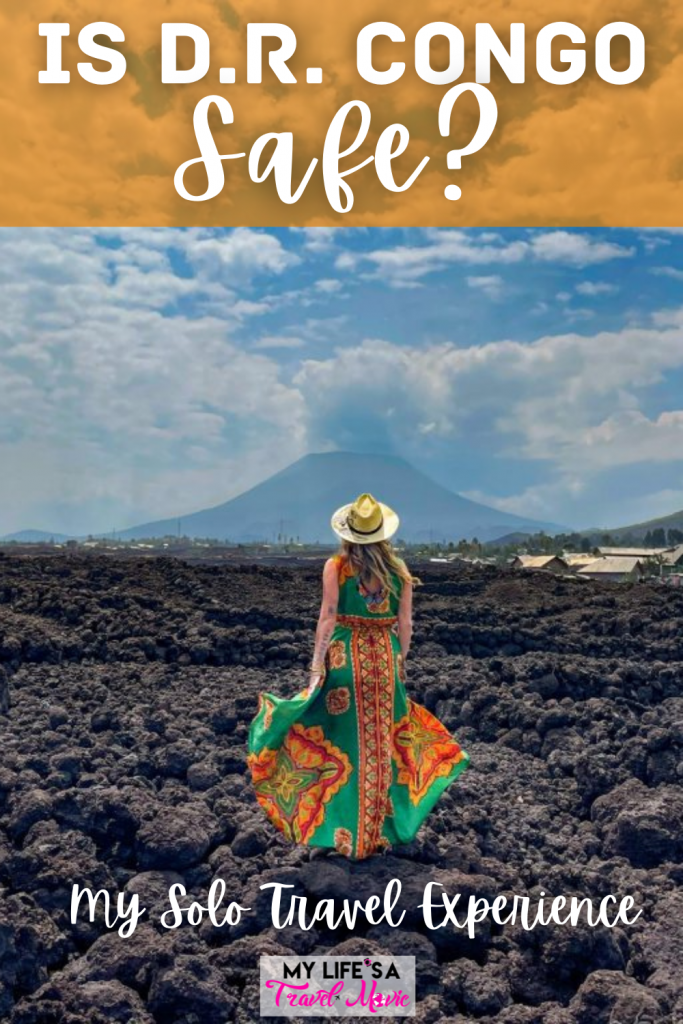

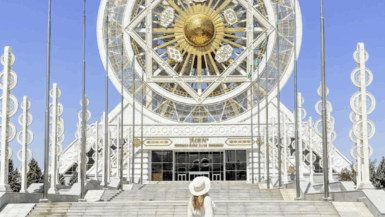
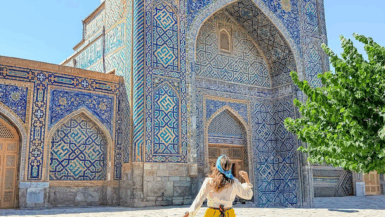
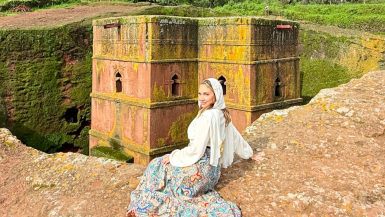
Well done Madam. Thanks for revealing the reality bcz sometimes rumors are a killer. People consider this country like a hell but your trip proves the opposite.
Keep it up.
Thank you Gad! I truly loved D.R. Congo, and I hope my experience will encourage others to visit there as well! I’m already coming back next year! Napenda Congo!
Hi Alyssa. Thanks for the timely article, I will share it with my adult children. I leave the US on August 29th for Kinshasa and from there to Goma and eventually to Bukavu for about 9 days before heading back to Kinshasa. I have a host in Bukavu and I’m looking forward to spending a little time hopefully visiting the gorilla preserve nearby, and going to the bonobo conservation area outside Kinshasa during the few days before I return to the US. I think your experience will reassure my two kids that I’m not crazy. Thanks again
Haha! Oh wow that’s amazing! I know a girl who just did a similar route solo! Very cool! If you need a great guide for Goma or mountain gorillas, please check out my friend Obed! He’s really amazing and his family comes from the Virunga Mountains! Enjoy beautiful Congo! And yes, tell your kids to check out my posts, it will make DRC seem a lot less scary!
[…] 11 Best Things to do in Congo in 2021 Ultimate D.R. Congo Travel Guide in 2021 Is D.R. Congo Safe? My Solo Travel […]
Thank you Alyssa for this very interesting synopsis of DR Congo. I enjoyed reading about the background immensely. Would you consider this country handicap friendly? I know you walked around the jungle and mountains but as I am handicapped I would like very much if you would also include a thumps up or down for handicap things to do.
Unfortunately I would have to say it’s not very handicap friendly unless you would just like to do leisurely activities around Lake Kivu 🙁 Because even to go to see Virunga requires having to climb into the big jeeps, and there’s so many hills. I would rather recommend Rwanda actually, because they have very easy hikes to see the gorillas or golden monkeys!!